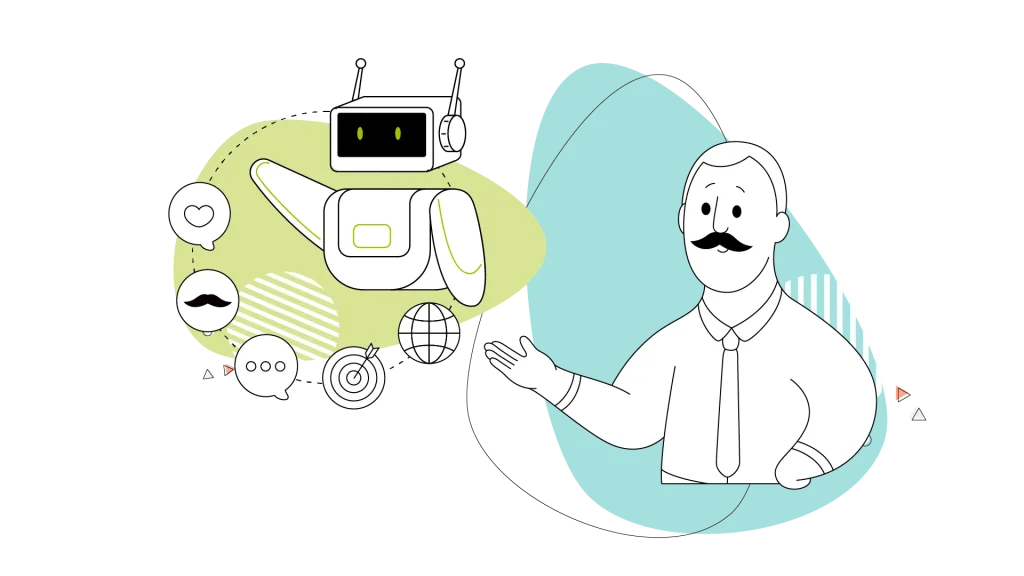The digital world is insatiably hungry. You’re battling to be heard over the noise of 7.5 million blog posts published every single day. You need to create more, engage better, and show a real return on your efforts—all while your time and resources are stretched thin.
If that sounds familiar, you’re not alone. But what if you could change the game entirely? It’s time to meet your new strategic co-pilot for 2025: Artificial Intelligence. And no, we’re not talking about robots looking to take over your job. AI is now an excellent content creation tool, and AI content creation tools are becoming more prevalent.
AI content creation is the ultimate answer to the challenge of scaling your output without sacrificing quality. It’s about automating the repetitive tasks so you can focus on the big picture—strategy, creativity, and connection.
This guide provides the practical workflow you need to do just that. By the end, you will know exactly how to leverage AI tools like Google’s Gemini and Midjourney to generate better ideas, accelerate your writing, and create stunning visuals, all while amplifying your unique brand voice.
Ready to turn content creation from a challenge into your greatest strength? Let’s start.
- What Can AI Do in the 2020s?
- The AI-Powered Content Workflow: A Practical Guide for Blog Posts, Visuals & Social Media
- The Human Touch: Keeping Your Brand Voice Authentic in an AI-Driven World
- Core Principles for Responsible & Effective AI Use in 2025
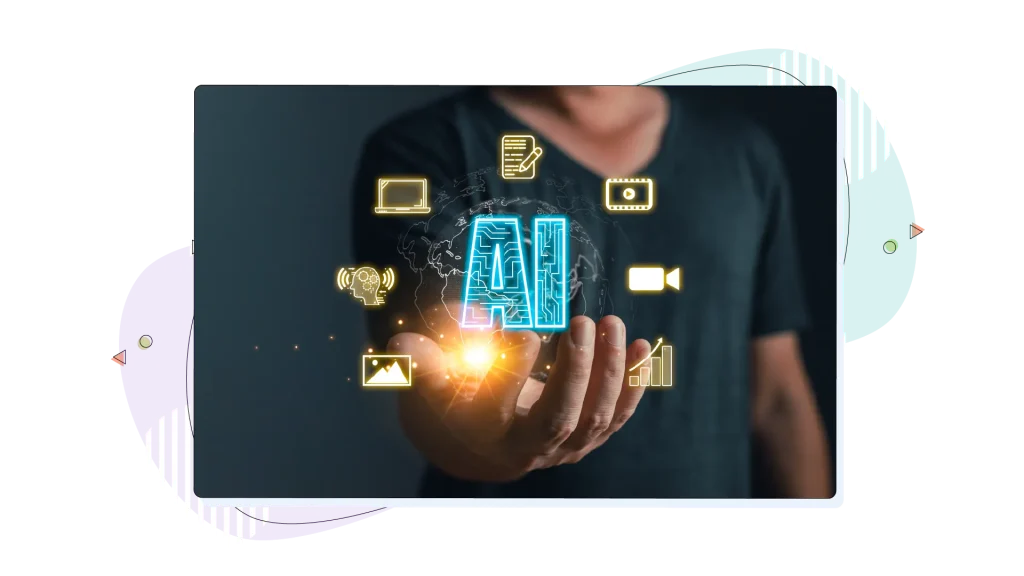
What Can AI Do in the 2020s?
Before you can master how to use AI for content creation, you need to understand your toolkit. The artificial intelligence powering these content creation tools has matured significantly. We’re no longer talking about clunky chatbots but nimble AI tools that help in every way possible.
Today’s Large Language Models (LLMs) are sophisticated engines built on advanced machine learning and natural language processing, capable of understanding nuance, context, and even your unique brand voice.
The modern content creation process isn’t about using one magic tool. It’s about building a stack of specialized AI tools that handle different parts of your workflow. This approach to AI content creation allows you to move faster, eliminate time-consuming tasks, and focus your energy on strategy and creativity.
Let’s break down the basic categories of AI tools for content creation that every marketer should know.
1. AI-Generated Text & Chat: Your Creative Co-Pilot
These foundational AI tools, like Google Gemini and OpenAI’s ChatGPT, are your partners for brainstorming and drafting. AI writing tools are also neat for assessing and managing your piece’s tone.
Use these conversational AI assistants to generate content ideas, draft sections of blog posts, create short-form copy for landing pages, and write video scripts. These content generation tools help massively with writer’s block, but remember the human touch: their output is a starting point that requires your expert editing to ensure accuracy and a consistent brand voice.
2. AI-Powered SEO & Strategy Platforms
To ensure your content is found, platforms like SurferSEO and MarketMuse merge AI with data-driven SEO insights. Before you write, they analyze top-ranking pages for your target keywords and provide a blueprint of subtopics and questions to include.
This helps you create comprehensive, relevant content that search engines are more likely to rank.
3. AI Image & Video Generation: Crafting Your Visual Identity
Move beyond stock photos with services like Midjourney, DALL-E 3, and Google’s Imagen 2.
These tools generate stunning, original images and illustrations from simple text descriptions, allowing you to create custom hero images and on-brand visuals for all your platforms. With emerging tools like OpenAI’s Sora or Google’s Veo 3, this same capability is rapidly extending to video content.
4. AI Social Media & Repurposing Tools
Your work isn’t done at “publish.” Social media management platforms like Buffer, Hootsuite, and Later now have powerful AI built into their platforms. Writing social media captions and other content that can be recycled or upcycled into other meaningful content for your business.
Use these tools to automatically repurpose your long-form content into engaging social media posts, tweet threads, write product descriptions, and video ideas with just a few clicks, saving you hours of work and ensuring a powerful presence across all your channels.
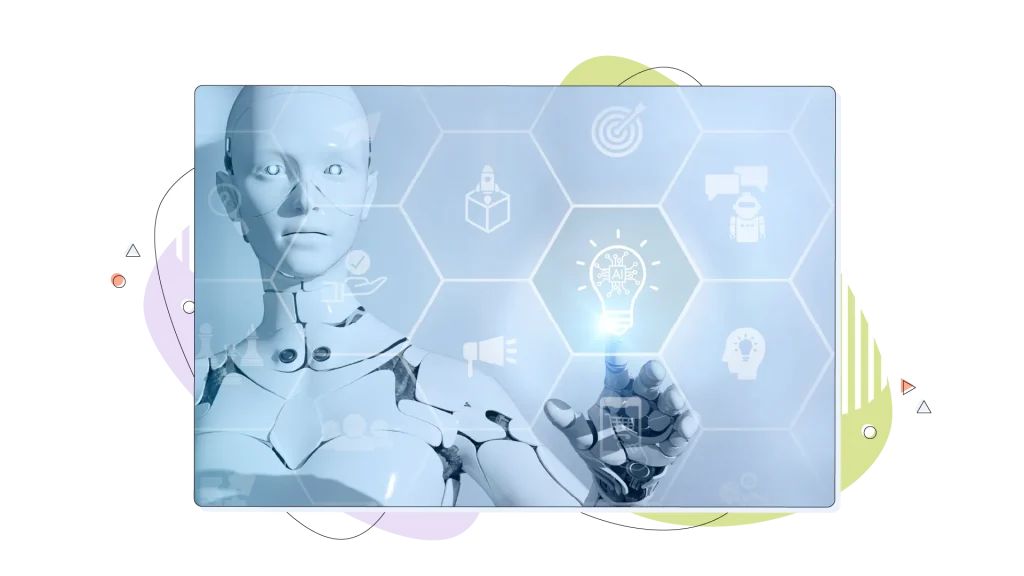
The AI-Powered Content Workflow: A Practical Guide for Blog Posts, Visuals & Social Media
This is where theory meets practice. Understanding the tools is the first step, but integrating them into your workflow is what separates inexperienced content creators from professional ones.
An AI content generator is as good as its operator, and an AI content writing tool is as good a writer as its user. This illustrates that these tools work best when fueled with good prompts.
This section is the core how-to guide for using artificial intelligence in your day-to-day content writing process, from the first flicker of an idea to the final promotional push across all your channels.
Part 1: AI for Blog Writing & Long-Form Content
Think of an AI writing assistant tool not as an author, but as a tireless research assistant and a brilliant drafting partner. Its role is to handle the heavy lifting of initial research and writing, allowing you to focus on strategy, unique insights, and the final polish that makes your content stand out.
A Step-by-Step Guide to AI-Assisted Writing
Step 1: Ideation and outlining: Before you write, you need a solid plan. AI is exceptionally good at brainstorming topics and structuring them in a logical, SEO-friendly way.
- Prompt example you can adjust: “Act as an expert content strategist for a finance blog. My core topic is ‘saving for a down payment’. Generate five unique blog post titles. For the most compelling title, create a detailed article outline with H2 and H3 headings that covers key subtopics and answers common questions a first-time home buyer might have.”
Step 2: Research and summarization: The internet is filled with dense reports, studies, and competitor articles. Instead of spending hours reading, you can use AI to distill the key information in seconds.
- Prompt example: “Please summarize the main findings and key statistics from this article [paste link to article] into five easy-to-understand bullet points.”
Step 3: Drafting sections (the “bricks” method): Never ask an AI to write a full article in one go; the result is almost always generic and unfocused. Instead, use your outline as a blueprint and ask the AI to write individual sections, or “bricks,” which you can then assemble.
- Prompt example: “Write a 300-word section for the H2 heading ‘How to Automate Your Savings’. Use a clear, encouraging tone. Include a brief, fictional anecdote about someone named ‘Stephanie’ who successfully used this method.”
Step 4: Editing and humanizing: This is the most critical step in the entire process. AI provides the clay, but you are the sculptor, and the content will need editing.
Review every line of the AI-generated draft for accuracy, tone, and flow. This is where you fact-check every statistic, inject your own personal stories and expert opinions, and weave in your brand’s unique voice.
This human touch is what turns a good draft into great content.
Part 2: AI for Visual Content Creation
Your words need visual support to make an impact. AI image generators like Midjourney, DALL-E 3, and Google’s Imagen 2 allow you to create completely original visuals that perfectly align with your message, eliminating the need for generic stock photos.
Practical Use Cases
- Blog headers and featured images: Create a stunning, one-of-a-kind hero image that grabs a reader’s attention and conveys your topic instantly.
- Prompt example: “Create a vibrant, photorealistic image for a blog header about urban gardening. It should show a person’s hands planting a small herb in a pot on a sunny apartment balcony, with a blurred city skyline in the background. The style should be warm and optimistic. Aspect ratio 16:9.”
- Custom illustrations and icons: Break up long blocks of text and explain complex ideas with custom visuals that match your brand’s colour palette and style.
- Prompt example: “Generate a set of 3 minimalist icons for a business presentation. The icons should be in a flat design style, using only the colours blue (#005A9C) and white. They need to represent ‘data analysis’, ‘global teamwork’, and ‘revenue growth’.”
- Social media graphics: Quickly produce eye-catching images for Instagram, LinkedIn, or Facebook posts without needing to be a professional designer.
Part 3: AI for Social Media Integration & Promotion
Your content’s journey doesn’t end after you publish it. An AI assistant can be your force multiplier, helping you promote your work across all social media platforms efficiently.
How to Integrate AI into Your Social Strategy
- Content repurposing: This is AI’s superpower for social media. Feed it a completed blog post and ask it to break it down into platform-specific content.
- Prompt Example: “Read the following blog post [paste the full text of your article]. From this text, create the following:
- A 4-tweet thread for Twitter summarizing the key takeaways, including relevant hashtags.
- A professional and insightful post for LinkedIn, aimed at industry peers.
- An idea for a 30-second Instagram Reel, including a quick shot list and a suggestion for a trending audio track.”
- Prompt Example: “Read the following blog post [paste the full text of your article]. From this text, create the following:
- Generating post variations: Create several different versions of a social media post to test which hooks or calls-to-action resonate most with your audience.
- The workflow: The most effective process is to use AI to generate a week’s worth of social media content in one sitting. Then, use a dedicated social media scheduling platform like Buffer, Hootsuite, or Later to plan out your content calendar. This automates your posting schedule, ensuring a consistent and high-quality presence online with minimal manual effort.
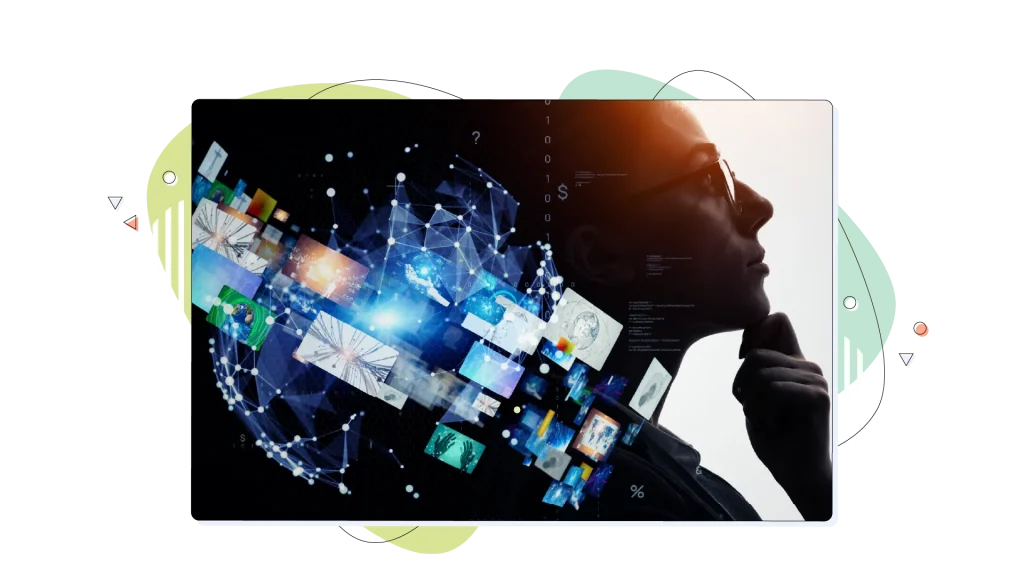
The Human Touch: Keeping Your Brand Voice Authentic in an AI-Driven World
As AI content tools become standard, the single greatest differentiator for your brand will be your authentic human voice. Anyone can generate a generic article, but no AI can replicate your unique experiences, your specific sense of humour, or the hard-won wisdom you’ve gained from your industry.
Human oversight is not just a final step; it’s where you infuse the content with value and build a real connection with your audience.
Here are actionable tips for humanizing every piece of AI-generated content:
- Inject your unique perspective: AI can provide facts, but it can’t provide meaning. Weave in your own personal stories, customer case studies, and strong, unique opinions. Where an AI might say, “It’s important to save money,” you can tell the story of how you saved for your first car. This is if you’re writing on a personal blog, for instance. If you’re a small business owner, you can share some anecdotes from when you had some financial challenges when building your business. This is what builds trust and makes your content memorable.
- Edit aggressively for tone: A first draft from an AI is often grammatically perfect but tonally flat. Go through it line by line and inject your brand’s personality. Is your brand witty? Add a joke. Is it authoritative and academic? Refine the vocabulary. Is it warm and encouraging? Make the language simpler. This is where your brand’s character comes to life.
- Develop a “brand voice style guide” for AI: Don’t leave your tone to chance. Create a simple document that outlines your brand voice and use it in your prompts. Include details like your target audience, your core mission, a list of words you use (and don’t use), and examples of your tone. You can then instruct the AI to “act as” your brand persona, giving you a much better starting point.
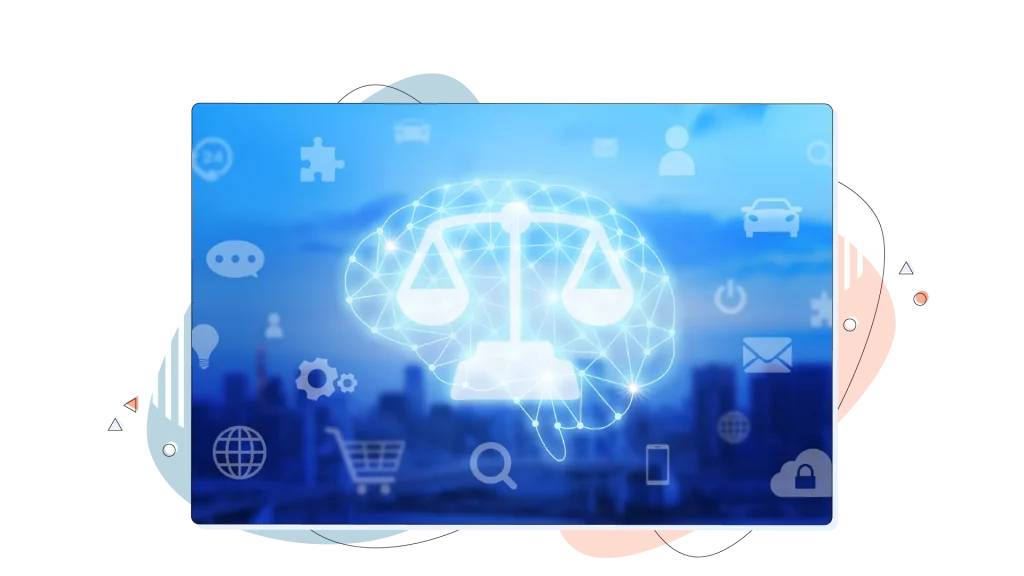
Core Principles for Responsible & Effective AI Use in 2025
Using AI effectively isn’t just about writing good prompts; it’s about operating under a clear set of principles. These rules will keep your content original, trustworthy, and valuable to both your audience and search engines.
- Transparency builds trust: While there’s no universal rule, the best practice in 2025 is to be transparent when AI plays a significant role in content creation, especially in journalism or scientific communication. For most marketing campaigns and content, a general disclaimer isn’t necessary, but you should never present an AI as a human expert. Your focus should be on the quality of the final product, which should always be vouched for by a human.
- The fact-checking imperative: AI models can “hallucinate”—a technical term for making things up with complete confidence. You must treat every statistic, date, and factual claim from an AI as unverified. Always trace claims back to a reputable primary source before you hit publish. Your credibility depends on it.
- Avoid plagiarism and “sameness”: AI learns from existing internet content, so it can sometimes produce text that is uncomfortably close to its sources. Always use plagiarism checkers and, more importantly, use the AI draft as a jumping-off point. The more you rewrite, restructure, and add your own ideas, the more original your final piece will be.
- Focus on value, not volume: The temptation with AI is to churn out content at an unprecedented rate. Resist it. The goal is not to create more content, but to create better content, faster. Use the time you save on drafting to do deeper research, conduct original interviews, and create more valuable resources for your audience.
- Align with Google’s E-E-A-T standards: Google’s stance on AI content is clear: they reward quality, not the method of production. Their E-E-A-T guidelines prioritize content that demonstrates Experience, Expertise, Authoritativeness, and Trust. A raw AI article fails this test. However, using AI content generation tools and a human-guided approach—where you use your expertise to direct the AI, fact-check its output, and add your unique experience—can absolutely meet and even exceed these standards.
Conclusion: The Future of Content is Human-AI Collaboration
Right now, artificial intelligence is a non-negotiable tool for an efficient content workflow. It’s the key to conquering the blank page, scaling your output, and distributing your message across every channel, creating a solid content strategy, and tackling your content marketing needs. But it is not a replacement for the creator.
Your human strategy, your creativity, your ethical oversight, and your authentic voice are the ultimate competitive advantages. The most successful creators won’t be those who let AI do the work for them, but those who master the art of working alongside their new creative co-pilot.
What’s evident is that creating content is becoming easier for less experienced writers and business owners who need immediate results. Still, people like copywriters are essential for achieving professional results, and this all depends on what you need from your AI tools.
Now it’s your turn. Pick one part of the workflow we discussed—outlining, image creation, or social media repurposing—and try it this week. Share your results in the comments!
FREQUENTLY ASKED QUESTIONS
Can AI fully write a blog post that ranks on Google?
While an AI can write a complete blog post, a raw, unedited AI article is unlikely to rank for competitive keywords. It lacks the experience, unique insights, and trustworthiness (E-E-A-T) that Google prioritizes. The best-ranking content is AI-assisted, not AI-generated, meaning a human expert has heavily guided, edited, and fact-checked the work.
Will I be penalized for using AI content?
No. Google has officially stated that they do not penalize content simply because it was made with AI. They penalize low-quality, unhelpful content, regardless of how it was created. As long as your content is original, helpful, and meets user needs, using AI in the process is perfectly acceptable.
What are the best free AI tools to start with in 2025?
The free versions of major platforms are incredibly powerful places to start. Google Gemini offers a robust and creative free tier. The free version of ChatGPT is also excellent for a wide range of tasks. For visuals, some tools offer a limited number of free image generations to let you experiment with their capabilities.
How do I avoid my content sounding robotic and generic?
The key is in the editing process. Read the AI draft aloud to catch unnatural phrasing. Break up long, complex sentences. Inject personal anecdotes, questions, and direct address (using “you” and “I”). And most importantly, rewrite sections in your own words to reflect your brand’s unique tone and personality.




